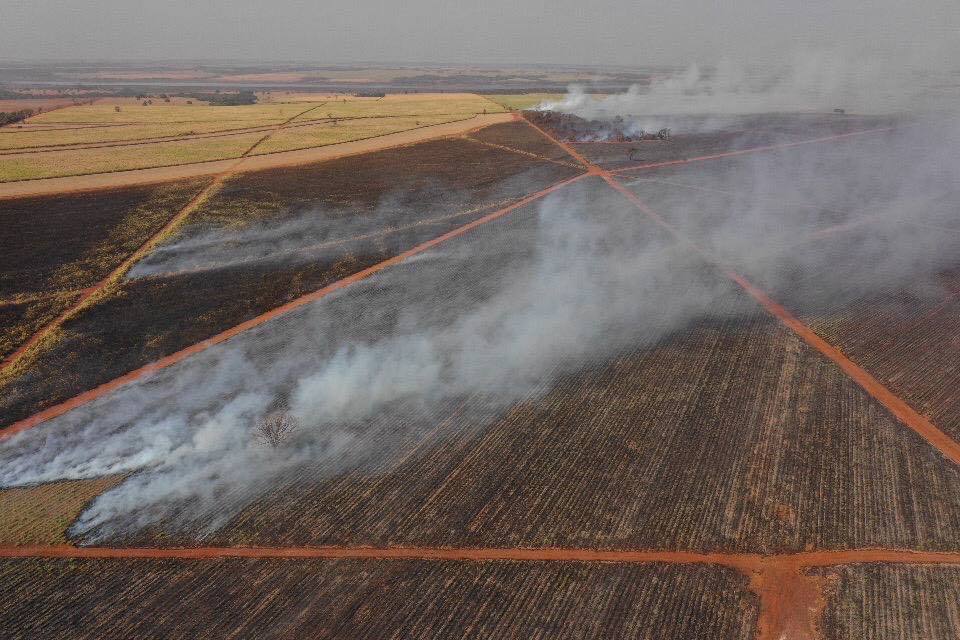Main Points
- The first half of September registered 8,300 fires in Center-South Brazil.
- Dry weather persists, increasing the risk of fires in the cane fields.
- Come check out the possible impacts of the fires for this crop.
Cane Fields at Risk of Fire
- It’s not news to anyone that CS Brazil has been suffering from the lack of rain for the second year in a row.
- In addition to the crop failure (-14%), the cane fields are extremely dry (fuel for fire).

- The frosts in June and July burned the sugarcane fields and vegetation, further intensifying the dryness.
- This dry mass potentiates fire in risk areas and makes it even more difficult to contain it.
Heatwave and Fire Spots
- The dry and hot weather increased the occurrence of fires, especially in the state of SP.
- In August in São Paulo, 2,277 fires were registered, more than double compared to August 2020.
- However, analyzing the Center-South region, the total number of fires was 7% lower compared to last year.

- For the first half of September, Inpe has registered so far almost 8,300 fires.
- Specifically for sugarcane plantations, according to UNICA data, the dry weather this year has already caused the burning of more than 150,000 ha.
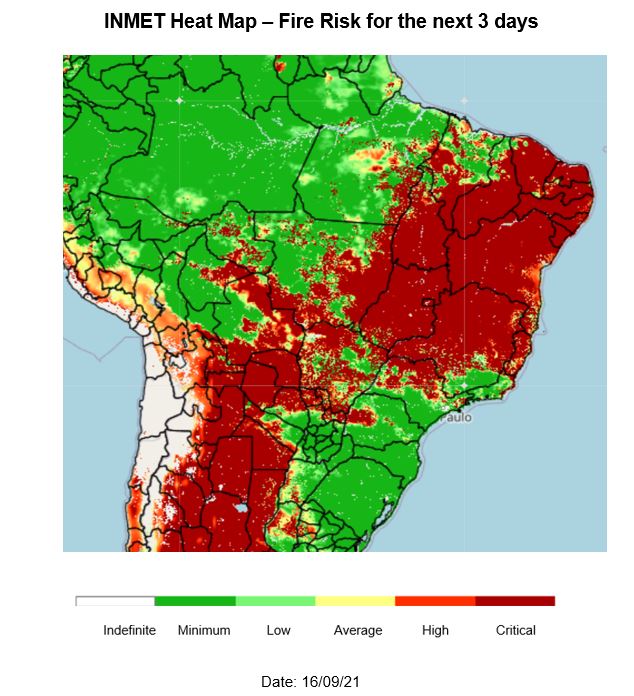
- According to INMET, the risk of new outbreaks should prevail in the coming days, especially in MG.
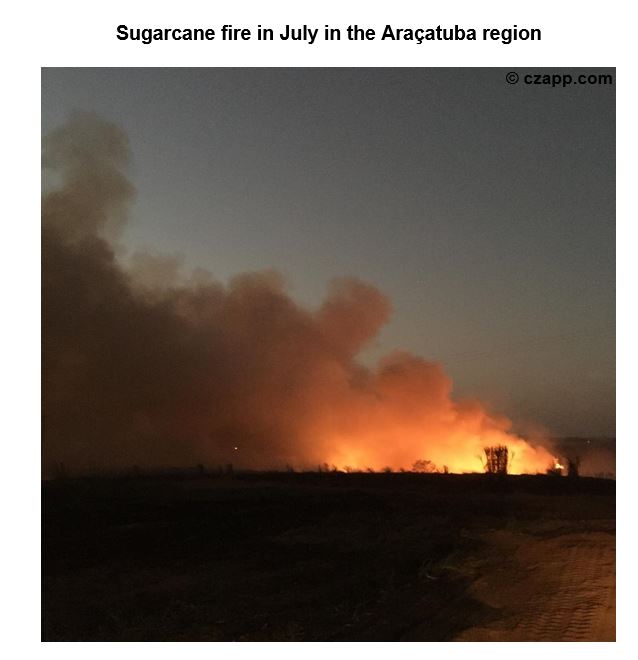
How does fire affect the sugarcane?
- For the current crop, the burned cane fields mess up the harvest schedule, as the cane needs to be harvested in advance.
- This means that any sugarcane that is not ready to be harvested must be used in the industry before its ideal maturation.
- In already harvested sugarcane, the fire should compromise the following crop:
- the physiological development of the plant will be delayed and failure to bud may occur.
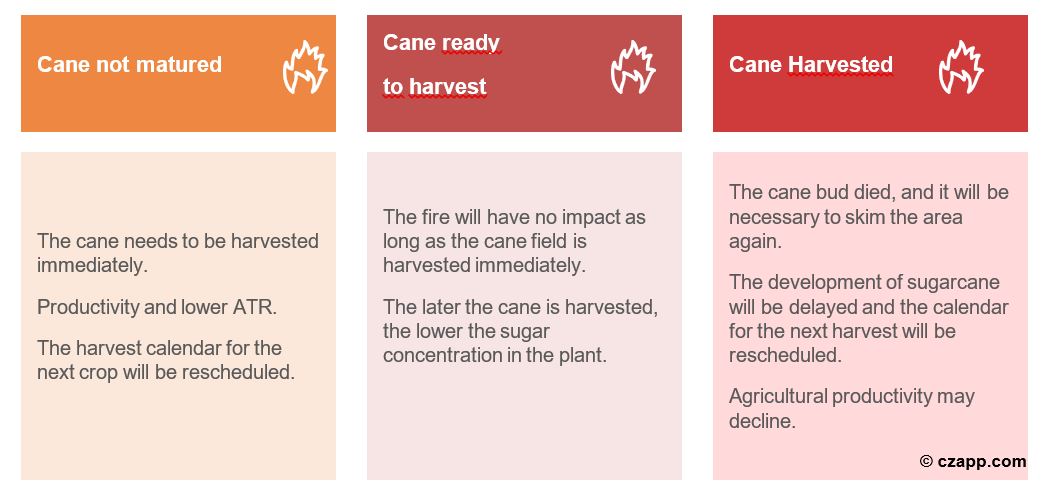
- In addition, burning straw removes an important physical barrier to moisture retention and natural fertilization, which can further impact plant development.
From now on
- Rains should be scarce until the end of September
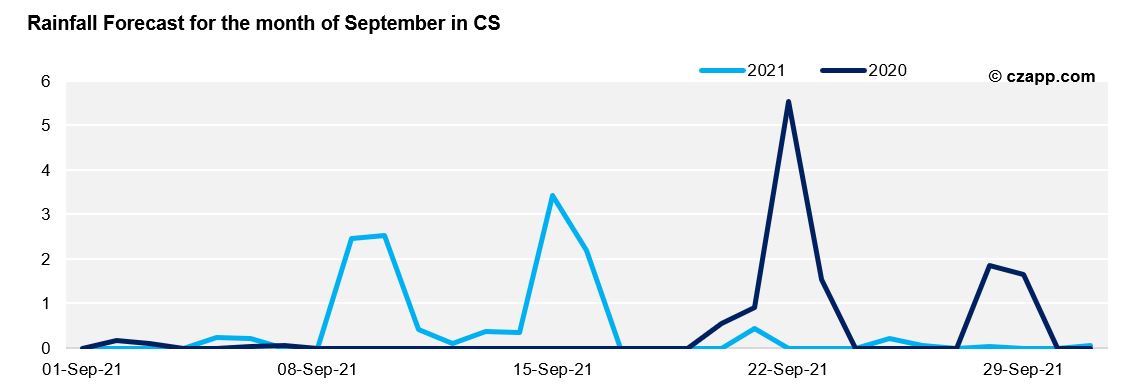
You can find the CS rain forecast on our Weather Dashboard in Czapp’s interactive data section
- This means that the risk of new fires prevails.
- According to Inmet, the regions remain under maximum fire alert.
- The risk of La Ninã, should extend attention to fire.
- As well as rising temperatures.
Relatórios que podem ser do seu interesse:
- The Farmer Diaries (Brazil): Drought and Fire
- We Visited Some of CS Brazil’s Fire-Beaten Cane Fields
- CS Brazil: Dry Weather and Fires
- Fire in CS Brazil’s Cane Fields
Dashboards que podem ser do seu interesse:

